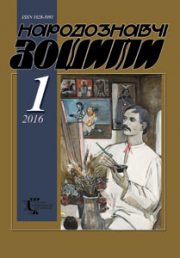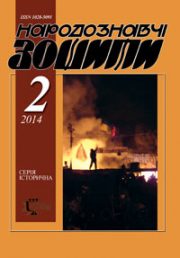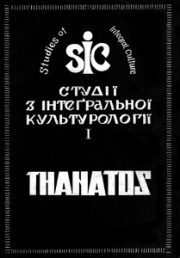The Ethnology Notebooks. 2019, № 6 (150), 1658—1666
UDK75.047:7.071.1 (477.86)”19/20″
DOI https://doi.org/10.15407/nz2019.06.1658
OSADTSA Marta
ORCID ID: https://orcid.org/0000-0002-9925-0231
PhD in Art Study,
Associate Professor of Vasyl Stefanyk Precarpathian National University
57, Shevchenko str., 76018, Ivano-Frankivsk, Ukraine
Leading Researcher of Precarpathian Art Museum
49, Novgorodska str., 76018, Ivano-Frankivsk, Ukraine
е-mail: martaosadtsa@gmail.com
Abstract. Introduction. The article deals with the classification of urban landscapes in the works of the artists of Ivano-Frankivsk region of the 20th — beginning of the 21st century on the thematic, stylistic and compositional features, and further systematization of their typical characteristics according to the historical and artistic stages.
Purpose. The objective of the article is to classify urban motifs in the works of artists of Ivano-Frankivsk region of the 20th — beginning of the 21st century in the context of its regional specificity, as well as subject-thematic, stylistic and compositional features, traditional elements and innovative changes. The object of the study is the paintings of artists of Ivano-Frankivsk region of the 20th — beginning of the 21st century, the subject of the study is to define figurative-content, thematic and stylistic features of the urban landscapes.
Methods. The definition of thematic-narrative, stylistic and compositional features of the interpretation of the city theme in the works of easel painting of Ivano-Frankivsk region of the 20th — early 21st century is provided using iconographic analysis, stylistic and comparative-typological methods of art criticism analysis.
Results. City themes in artistic reflections of Pre-Carpathian artists of the study period in aspects of figurative and narrative features received an interpretation as the historical and architectural appearance of the city or a separate monument of architecture represented by the dominant of religious buildings, architectural ensembles among other components of the urban space; chamber landscape with fragments of historical building and architectural decoration; urban environment with motives of intensive city-planning processes; space of everyday presence of a human being.
Conclusion. In the art of Ivano-Frankivsk region, such plot solutions of the urban landscape are distinguished, depending on the nature of the image, as historical ruins; city ensembles; architectural monuments as content and compositional dominants (prominent historical buildings, objects of religious and defensive architecture as components of the historical environment); ruins as a result of military injuries; city dwellings as chamber fragments of space; yards and suburbs; industrial motives with elements of engineering and new buildings as objects of intensive urban processes; elements of architectural decor (stucco, sculptural decor, etc.).
Keywords: city landscape, painting, stylistics, composition, Ivano-Frankivsk region.
Received 7.11.2019
REFERENCES
Van den Berg, D. Spectators in Jerusalem: Urban Narrative in the Scenic Tradition. Retrieved from: http://www.imageandnarrative.be/inarchive/illustrations/ dirkvandenberg.htm (Last accessed: 29.10.2019).
Goranskaya, T. (2015). The Image of the Сity in the Fine Art of Belarus of the 20th and beginning of the 21st century. (Extended abstract of PhD dissertation). Minsk [in Russian].
Osadtsa, M. (2019). The Urban Landscape in the Creative Work of Artists of the Ivano-Frankivsk Region of the 20th — early 21st century. (Doctoral dissertation). Lviv: National Academy of Arts [in Ukrainian].
Nikulina, O. (1982). Nature through the Eyes of an Artist. Problems of Modern Landscape Painting Development. Moscow: Soviet artist [in Russian].
Mysyuga, B. (2006). Ideological Content and Formal Features of the Landscape in the Painting of Galicia in the first third of the 20th century. The Ethnology Notebooks, 5—6, 697—709 [in Ukrainian].
Zapasko, Ya., Ovsiychuk, V., & Chernovsky, O. (1979). The Art of the Renewed Land. Kyiv: Art [in Ukrainian].







